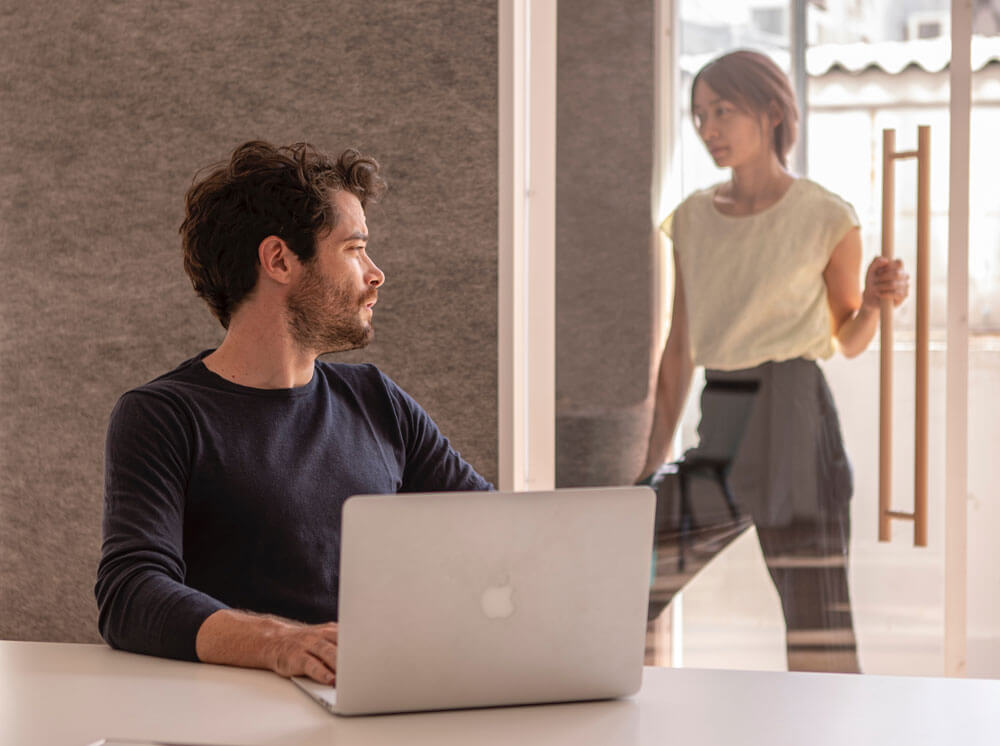Let’s begin with what we don’t know. We don’t, for example, have enough data to determine whether offices will return to their pre-pandemic occupancy numbers. They probably won’t. In New York, less than 15-percent of workforces have returned to the offices they left behind in March. Most of the windows and doors are still locked. As of this writing, it’s safe to assume that “Big Tech” and other forward-thinking industries have permanently switched over to hybrid offices. But here’s what we know: the office space of the future will be different from what you remember—and it’s going to decade at least a decade to see that change.

Most corporations aren’t in the financial position to spend millions on reconfiguring office spaces towards more pandemic-proof designs; it’s going to be a slow evolution based on ROI, employee occupancy, efficiency, and whether the hybrid model eventually becomes entirely “work from home.” Currently, most offices have simply banned common areas and patios, created socially distanced workspaces, and normalized sanitization and health screenings. But what’s the future office going to look like? This is a design question.
Firstly, expect offices to slowly optimize ventilation, upgrade airflow systems, air-conditioning (e.g., hospital-grade HVAC systems), and heating systems to reduce the spread of virus particles, to improve overall air quality and reduce hot and cold weather transfer.
The bottom line: Air purification tech is going to be a booming industry, and corporate America is going to be its biggest customer.
We’ve already seen plexiglass dividers separating workspaces—which aren’t proven to be effective—and most experts are already predicting the emergence of office pods built with tempered glass or plastic and constructed in the form of mobile-offices (think of them as tightly sealed-off cubicles; classic but modern). Everyone will have their own office. Open-plan spaces are no longer going to be a design norm. The “cool” WeWork-style office where everyone feels like they’re occupying the same modern glass clubhouse? The windows and doors office? It’s canceled, sort of. Similar “workout pods” design concepts are appearing in gyms, which are actually more cost effective than plexiglass dividers (though gyms are not yet using dual-pane glass doors or wrought-iron frames). This is a boon for the real estate industry, as leasers will likely be looking for larger office spaces to house their glass pods and more walled-off office spaces, custom designs, conference rooms, wider corridors to support social distancing, one-way walking pathways, and foot markers to indicate that you’re six feet apart from your coworkers (i.e., “six feet office”).
It’s important to note that even home buyers are moving beyond larger, multipurpose spaces, and towards more “quarantined” interior design—which improves privacy and home office efficiency.
In terms of office tech, we’ve already heard buzz about touchless technology completely taking over the office; this includes elevator controls, advanced video conference panels, UV technology, automatic doors, and office equipment that’s either regularly sanitized or more hands-free than they previously were. Offices are going to look more like Star Trek and less like WeWork. Corporations are going to have to invest in emerging technology that can essentially allow them to internally test their employees, which means an entirely new division of Human Resources that focuses on employee health, office sanitization, scheduling to ensure offices are never at capacity, and “health cops” at entry doors of office spaces.
Culturally? Expect this to be the end of face-to-face conference room sessions and cramped all-staff meetings. Social distancing is now as much a part of our DNA as wrought-iron doors are part of the entrances to our homes. The future office is going to combine classic, more insulated approaches to privacy with modern tech that’s fully customizable.
***


